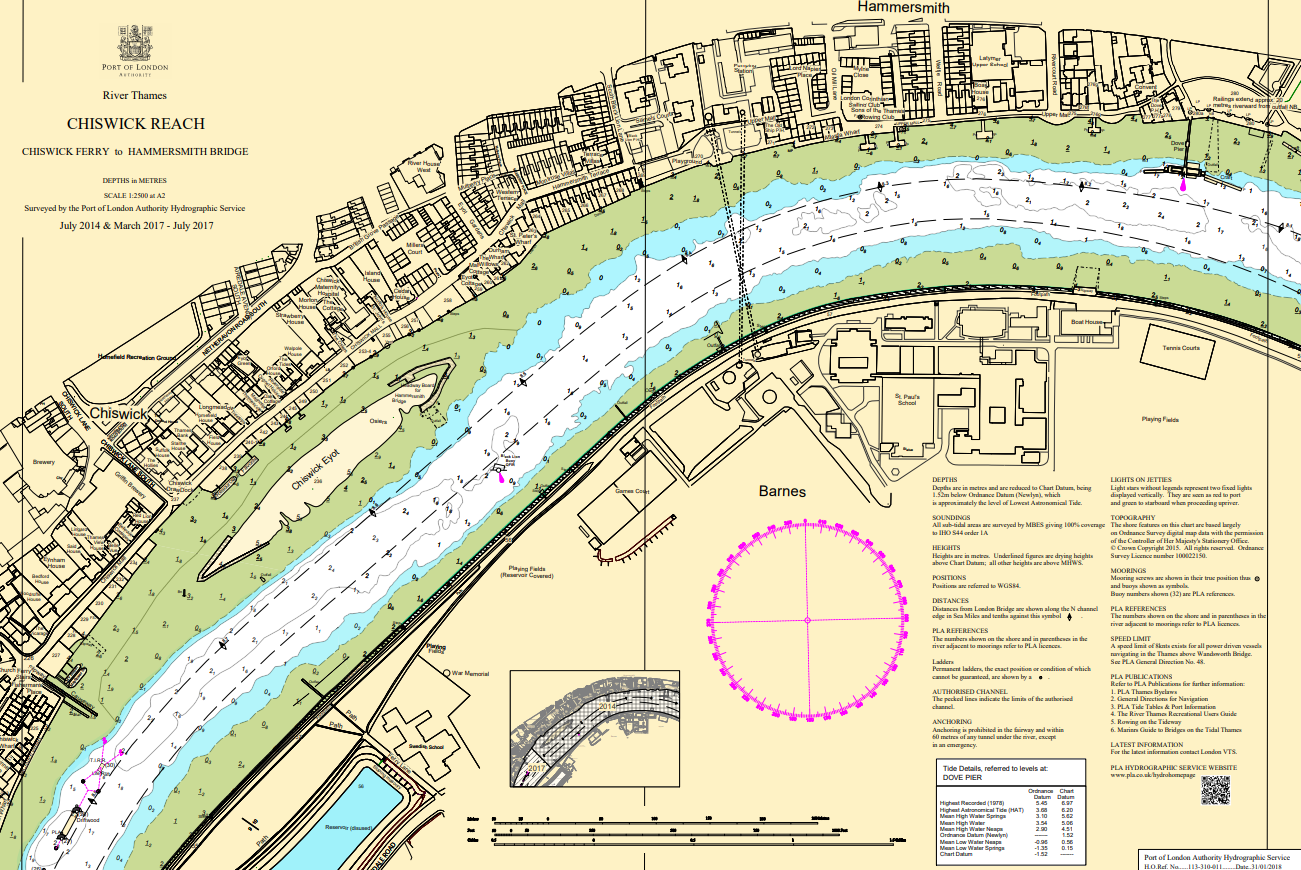Live Tides
NOTICES TO MARINERS
Charts & Surveys

Incident reporting
Life-threatening emergencies on the river:
Call 999 and ask for the Coastguard
For near miss, safety observations and incident reporting click below
Baseline document
The PLA's "Baseline Document" was originally published in June 2007
This document contains information relevant to the integrity of the European Protected site on the Thames Estuary.
In 2014 the document now reviews the whole of the PLA areas to reflect further legal requirements for the Water Framework Directive, and the recommended Marine Conservation Zone.
In preparing the PLA's baseline document, a data-gathering exercise was carried out. Much data had already been collated by the PLA as part of the Maintenance Dredging Framework. It should be emphasised that the Baseline is based on a desk study of existing and readily available data only (as specified in the draft protocol) and no original survey work has been carried out as part of this exercise. However, through the PLA's Maintenance Dredging Framework, considerable amounts of survey and monitoring data associated with the dredging operations have been gathered.
In addition, the data-gathering exercise has deliberately focused on those environmental parameters that potentially could be affected by maintenance dredging and are of relevance to the integrity of the SPA. These include the following:
- coastal processes and morphology;
- sediment quality;
- water quality;
- intertidal ecology;
- ornithology;
- and noise (where this is limited to potential disturbance of feeding or roosting birds).
Other parameters are also evaluated:
- New methods
- New sites
- changes in existing sites of volume or methods
- Legislative or management changes in protected sites
The presumption on which the protocol is based is that maintenance dredging will continue in line with present established practice The established practice and relevant restrictions are set out in the document, where they may have changed to reflect new techniques or practices. These are reviewed and recommendations are made where it can be improved. The baseline document has been prepared on the premise that existing practice is part of the functioning of the existing system (i.e. part of the baseline environment and the way it functions).
The baseline document forms a basis for any future assessment of changes in operations, and is therefore an important tool in the management of any future dredging operations in the tidal Thames. Therefore the document must be reviewed and amended regularly to reflect changes in practices, as well as in protection or additional sites. Once produced the baseline document is approved by the competent authority, which is Natural England, and then published for any operator to use.
Baseline documents
Maintenance Dredge Protocol Baseline Document - March 2020
Maintenance Dredge Protocol and Water Framework Directive Baseline Document - Oct 2014
The Dredging Conservation Assessment represented a summary of then existing environmental management practice in the Thames - August 2009
Baseline Document for Maintenance Dredging - June 2007
Discover


